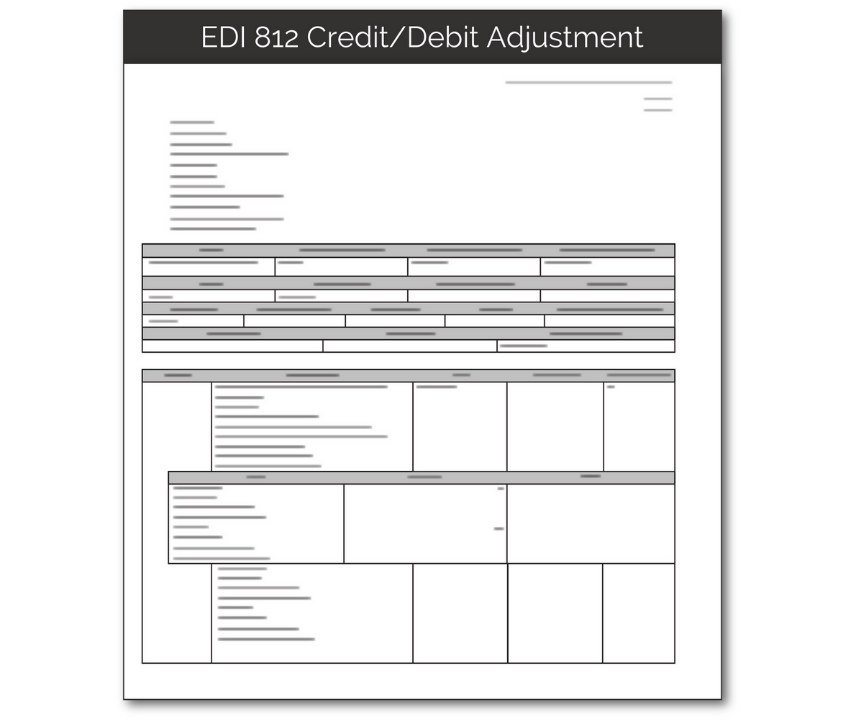EDI 812
Credit/Debit Adjustment

What is an EDI 812?
EDI 812, also known as a Credit/Debit Adjustment, is an EDI transaction set used by buyers to reflect adjustments made as a part of a particular payment. This electronic document replaces the need for paper credit or debit memos and can be used to help reconcile payments against invoices.
EDI 812 documents follow the x12 format set by the American National Standards Institute (ANSI), a not-for-profit organization that regulates EDI formats in the U.S.
What are the Essential Components of EDI 812?
Because EDI 812 can be matched to an accompanying 810 document, it can include the original invoice or transaction number for the order. Other key details on the EDI 812 transaction include:
- The total adjustment amount requested
- Item quantities and descriptions, including SKUs or UPCs
- Chargeback codes to delineate the reason for the request

How do I Use EDI 812?
No matter how optimized your supply chain is, mistakes happen. Whether it’s a pricing error, unexpected product damage, or an issue with product type or quantity, these situations often result in adjustments to the payment that occurs on the invoice. In some cases, a retailer may also use this document to also convey agreed upon on-invoice discounts.
Buyers can use EDI 812 to request a credit from a seller if they didn’t receive the right products in quantity or type, or for products they are returning. Buyers can also request a credit from their suppliers when items arrive damaged or defective. Additionally, EDI 812 can be used by any party to rectify pricing errors in EDI 810 Invoice.
EDI 812 Credit/Debit Adjustments are only used for financial adjustments. They do not authorize product returns; for this, businesses should instead use EDI 180 Merchandise Authorization/Notification.
In response to an EDI 812, a trading partner will usually send back an EDI 997 Functional Acknowledgement to confirm receipt. This may be accompanied by an electronic funds transfer.
What are the Benefits of EDI 812?
By using an electronic data interchange (EDI) document instead of a paper or faxed adjustment request, businesses can quickly respond to charges, and reconcile them with their Invoices. Because EDI 812 is automated, there’s no need to manually retype information into your accounting system, which saves time and prevents errors. Plus, EDI 812 helps to provide an electronic paper trail for transactions relating to an order.
Like most EDI transaction sets, EDI 812 Credit/Debit Adjustments are sent using specialized EDI software. This software is often protected by security protocols such as at-rest and in-transit encryption, making these documents more safe and secure than email, PDF, or paper documents.

